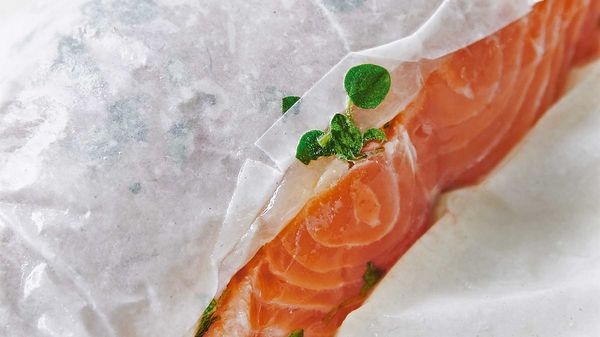
Fine or coarse, derived from seawater or mined from under the ground – salt finds its way onto tables around the world in more than 4,000 varieties and colours. Without this mineral, our lives would be rather bland.
Seasoning it right!
Salt is a natural flavour enhancer. It is the opposite of sweetener, making bitter ingredients milder and intensifying (especially in combination with fat) the effect of natural flavours. When seasoning, the shape of the crystals is of utmost importance because this determines the density. This is why a tablespoon of table salt with its tiny crystals is many times saltier than the same measure of coarse sea salt. The measure of all things is not the spoon but the weight. Better still is to season according to taste. Fine varieties are great for gravy, marinades or pastries because they dissolve immediately and are thus ideal for checking seasoning by tasting. The flakes of Fleur de Sel with their large surface area as well as Sel Gris are just right for seasoning vegetables, meat, fish or sweet pastries because their crunch causes delicious taste explosions on the palate. Don’t forget salty ingredients where appropriate for the recipe – capers, olives, soy sauce, miso, cheese, anchovies, algae and cured meat.
Osmosis in cuisine
What do bland broth, watery vegetables and limp lettuce have in common? They were seasoned incorrect. The reason: salt is osmotically active. This means if you want to make a broth, the water needs to be left unsalted so that the vegetables and bone yield their flavour and nutrients, ensuring the liquid and the food are in chemical equilibrium. The opposite is the case when boiling fish, meat, potatoes or pasta: in this case, salt water preserves the nutritional value, ensuring it doesn’t leach out of the ingredients. Cabbage salads should be seasoned early on so that the salt softens the tough structure of the salad. Delicate leaf salads, on the other hand, should not be combined with the dressing until shortly before serving to ensure the leaves don’t go limp. The relationship between salt and time is decisive especially in the case of raw meat: when the surface is rubbed with salt, juices are drawn out from inside. This is why it is best to salt a delicate meat fillet shortly before frying. Seasoning the meat and leaving it overnight or all day allows the salt to penetrate deep into the tissue, giving it the chance to act upon the protein fibres and thereby ensuring the liquid is retained during cooking. In this way, grisly meat, joints of beef or large pieces of poultry turn out tender and juicy. Fine or coarse, derived from seawater or mined from under the ground – salt finds its way onto tables around the world in more than 4,000 varieties and colours. Without this mineral, our lives would be rather bland.


